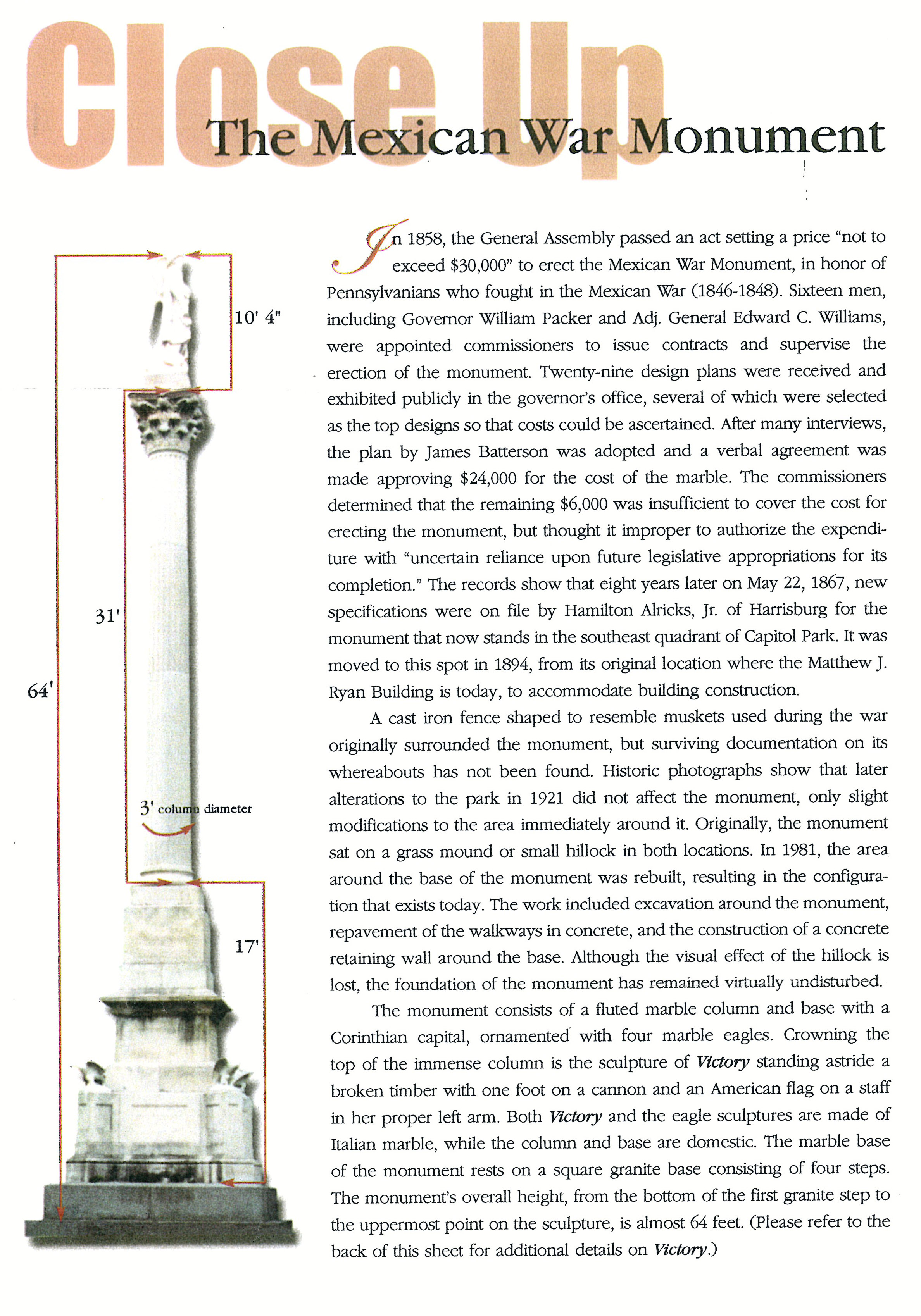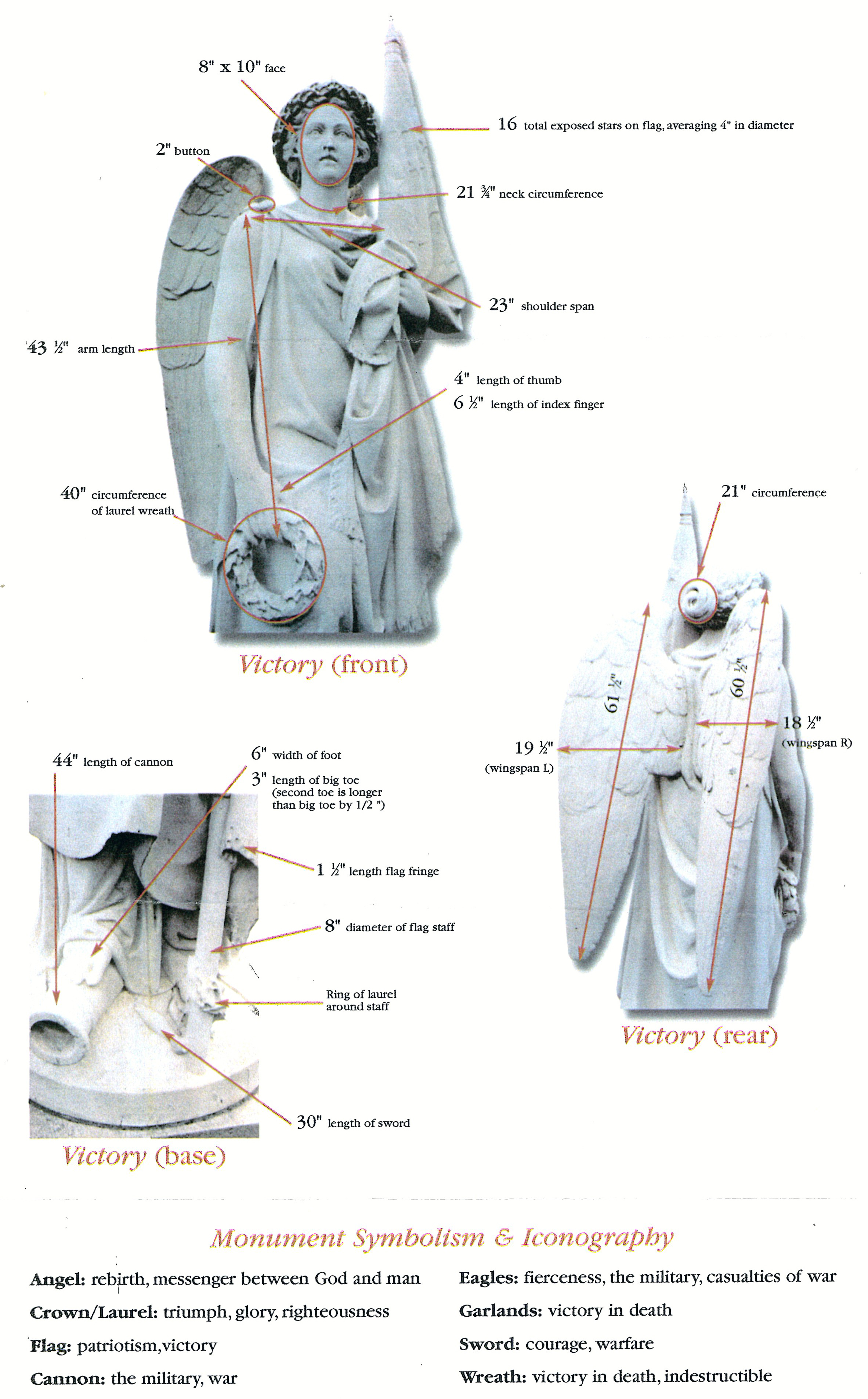Mexican War MonumentIn 1858, the General Assembly passed an act setting a price "not to exceed $30,000" to erect the Mexican War Monument in honor of Pennsylvanians who had fought in the Mexican War (1846-1848). Sixteen men, including Governor William Packer and Adjutant General Edward C. Williams, were appointed commissioners to issue contracts and supervise the erection of the monument. Twenty-nine design plans were received and exhibited publicly in the governor's office, several of which were selected as the top designs so that costs could be ascertained. After many interviews, the plan by James Batterson was adopted and a verbal agreement was made approving $24,000 for the cost of the marble. The commissioners determined that the remaining $6,000 was insufficient to cover the cost for erecting the monument, but thought it improper to authorize the expenditure with "uncertain reliance upon future legislative appropriations for its completion." The records show that eight years later on May 22, 1867, new specifications were on file by Hamilton Alricks, Jr. of Harrisburg for the monument that now stands in the southeast quadrant of Capitol Park. It was moved to this spot in 1894, from its original location where the Matthew J. Ryan Building is today, to accommodate building construction. A cast iron fence shaped to resemble muskets used during the war originally surrounded the monument, but surviving documentation on its whereabouts has not been found. Historic photographs show that later alterations to the park in 1921 did not affect the monument, only slight modifications to the area immediately around it. Originally, the monument sat on a grass mound or small hillock in both locations. In 1981, the area around the base of the monument was rebuilt, resulting in the configuration that exists today. The work included excavation around the monument, re-pavement of the walkways in concrete, and the construction of a concrete retaining wall around the base. Although the visual effect of the hillock is lost, the foundation of the monument has remained virtually undisturbed. The monument consists of a fluted marble column and base with a Corinthian capital, ornamented with four marble eagles. Crowning the top of the immense column is the sculpture of Victory standing astride a broken timber with one foot on a cannon and an American flag on a staff in her proper left arm. Both Victory and the eagle sculptures are made of Italian marble, while the column and base are domestic marble. The marble base of the monument rests on a square granite base consisting of four steps. The monument's overall height, from the bottom of the first granite step to the uppermost point on the sculpture, is almost 64 feet.
|
MEXICAN WAR MONUMENT DIMENSIONS
VICTORY DIMENSIONS |
||||||||||

